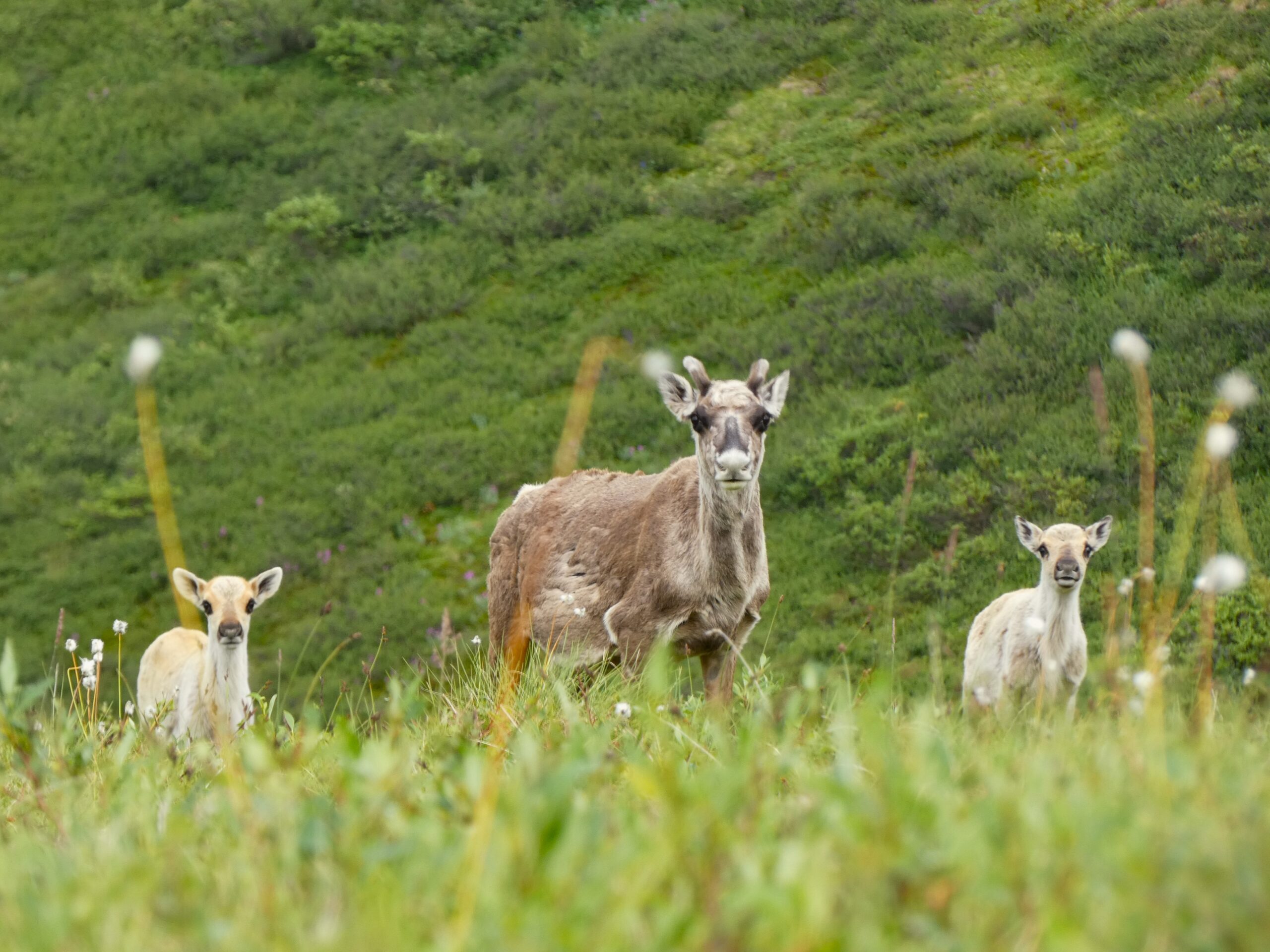
Every year in the remote expanses of Northwestern Canada’s Arctic, the Porcupine Caribou Herd embarks on the planet’s longest land migration, an odyssey of a few thousand kilometers across the Arctic tundra, rugged Northern Rocky Mountains, coastal plains, and unique boreal forests spanning the Inuvialuit Settlement Region of the Northwest Territories, Yukon, and Alaska.
During their short summer months of June and July, they face a relatable challenge; swarms of mosquitoes and other harassing insects chasing the herd’s unique carbon dioxide signature, believed to influence herds behavior and energy expenditure. This unique interaction is what our research is centered around, leading to an incredible summer rich with field work and experience.
The support
Partnering with the Yukon Government with support from Parks Canada and the Inuvialuit community of Aklavik, I got the opportunity to spend a month and a half in the heart of the herd’s summer range on the Yukon’s North Slope. Staying at the Ivvavik National Park’s base camp or in my tent on the open tundra, I worked closely with local professionals to sample harassing insects throughout June and July. Mike Suitor from the Yukon Government; Colleen Arneson from Parks Canada; LeeJohn Meyook of Aklavik, NWT; and Patrick Gibeau, a fellow graduate student at McGill, played pivotal roles in supporting the fieldwork of this project.
The research
Mosquitoes, black flies, and bot flies were what we were after. More specifically we wanted to know when they are active and why. Mosquito sampling was conducted using a method called sweep netting. This sampling technique uses a butterfly net to catch and count individual mosquitoes. Sampling flies required a specialized trap known as a malaise trap where insects are caught in a freestanding net that funnels into a collection bottle. Both methods used carbon dioxide as bait to attract the insects. It was produced by either our lungs when sweep netting or released out of a pressurized tank placed under the trap. Accompanying the insect samples, we took weather measurements using a small weather recording device in hopes of improving our understanding of insect harassment on this herd and how this relationship may shift in the face of climate change.
The experience
Time spent on the land yielded a fruitful season of data collection rich with diverse wildlife encounters. While the tundra often seemed desolate during the repetitions of field work, with the occasional caw of ravens or a siksik (Inuvialuktun for arctic ground squirrel) chewing on trekking poles, the retrospective lens paints a different picture. Looking back, I treasure memories of moose, bears, caribou, dall sheep, muskoxen, wolves, ptarmigan, and a symphony of migratory birds, transforming the once seemingly barren landscape into a living canvas.
One encounter lingers a little longer on my mind. One morning while camping in the Richardson Mountains with LeeJohn, I awoke to a chorus of grunts and clicking hoofs. Our campsite was overrun with caribou. The Porcupine Caribou Herd was migrating their newly born calves to forage and insect relief habitat in the mountains. A large portion of the herd’s over 200,000 individuals streamed through the valley, stopping to graze before funneling over a mountain pass to continue their long journey. On the fourth day of caribou, we watched the last stragglers make their way over the pass and the familiar quiet tundra returned, almost comforting after that relentless onslaught of ungulates.
In the heart of the remote Arctic wilderness, my summer of research unfolded amidst the vast and remote Yukon North Slope, exploring caribou’s intricate relationship with insects. I found myself not just studying nature but becoming a part of its living tapestry. Countless days of barren calm and a few moments of Arctic intensity left an enduring memory of the North’s captivating beauty and ecological wonders.
Will Hein is pursuing a master’s degree in Renewable Resources with a focus on studying the Porcupine Caribou herd.

Very interesting and well written. Enjoyed it very much.
What a lovely description of the tundra, your experience and your research. Thank you.
Votre récit me laisse sur mon appétit. J’en aurais pris encore et encore. Vous avez vécu là une expérience, une aventure que peu auront la chance de connaitre. Merci du partage.